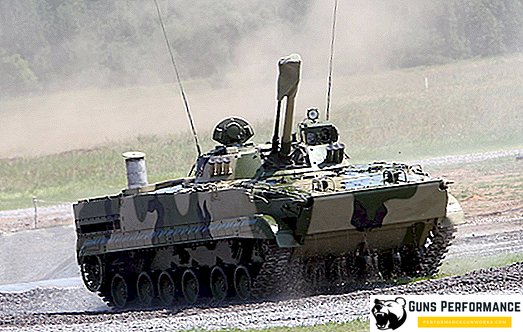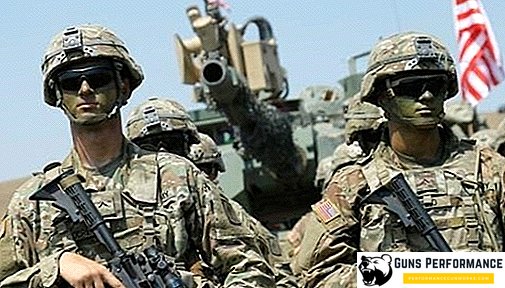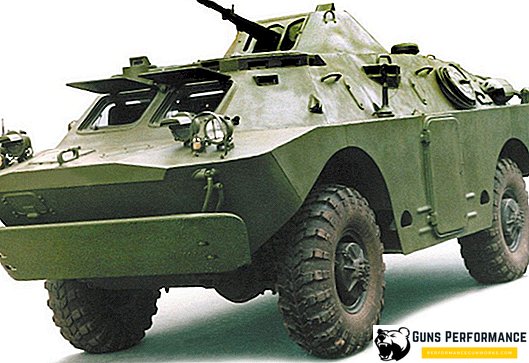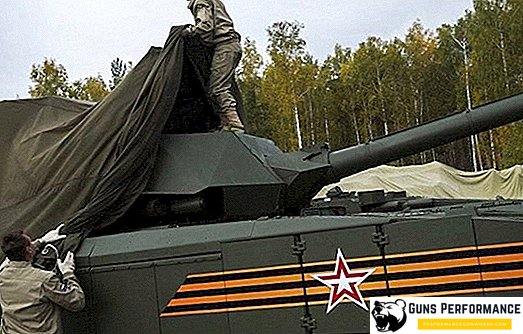The military-industrial complex (abbreviated MIC) is a part of the state’s industry that manufactures military equipment and is aimed at R & D in the defense sector. The formation of the MIC occurred in the second half of the 20th century. The main prerequisites for its formation were the growth of military operations and the expansion of the armed forces.
At that time, the best results were demonstrated by the military industrial complex of the Soviet Union, America, Great Britain, Italy and the Warsaw Pact Organizations (ATS).

In connection with the transition from battles to a peaceful political dialogue between the warring parties, and then the split of the USSR and the ATS, the number of weapons and armed forces produced was reduced almost three times. Thus, from the 90s, the military-industrial complex of Russia was entrenched at a sufficient level for the security of the state as a whole; no significant ups and downs were noted. In early 2000, it consisted of more than two thousand enterprises, but there was no exact understanding of what the military-industrial complex is. Today, the management commission includes 18 people headed by the President of the Russian Federation - Putin V.V. In addition, the commission has a scientific and technical council of the military-industrial complex (the leader is Yu.M. Mikhailov) and the military-industrial committee board (the head is D. Rogozin, the head of the board’s office is Borovkov I. V.).
Specificity of the military-industrial complex
Distinctive features of the MIC:
- the customer is always the state;
- non-standard requirements (manufacturability, capital intensity, long-term) to the quality and technical properties of weapons and military equipment;
- confidentiality of innovative projects;
- the inability of enterprises to enter the foreign market;
- high professionalism of the leaders of the military industrial complex of Russia;
- manufacturers are directly dependent on each other;
- the need for a large stock of material and labor resources;
- huge scale of defense enterprises.
The level of development of the military-industrial complex of Russia plays a key role in maintaining the security of the entire country, is largely responsible for the technical re-equipment of the main segments of the economy (medicine, transport, education, the fuel and energy complex (FEC), social security, etc.), is a sign of political sustainability.

What is the principle of military-industrial enterprises?
The military-industrial complex includes enterprises that are engaged in the manufacture and development of the necessary equipment for a successful attack, ammunition, firearms and chemical weapons.
The location of the enterprise is determined based on the following factors:
- security;
- convenient logistic interchange;
- availability of qualified specialists and material resources;
- the city in which the enterprise is based must be closed;
- the possibility of creating duplicate production.
The main principle is the security of the location of the manufacturing enterprise of the military-industrial complex, taking into account the time of the flight of foreign missiles and aircraft, therefore the enterprises and main centers are located in remote areas of Russia (Siberia or the Urals).

Branches of the military-industrial complex:
- ammunition manufacturing. For these purposes, the plant is located in the Central and Western regions of Russia;
- rifle industry (Izhevsk, Volgograd, Klimov, Nizhny Novgorod, Kovrovsk);
- nuclear production, including mining and processing of uranium ore (Zelenogorsk, Ozersk, etc.). Dispose of nuclear waste in Snezhinsk;
- space industry (launch and production of rockets in Moscow, Samara, Omsk, Zheleznogorsk, Krasnoyarsk);
- production of military aircraft parts and their collection (Kazan, Moscow, Irkutsk, Taganrog, Saratov and other cities);
- tank industry (Volgograd, Arzamas);
- military shipbuilding (Komsomolsk-on-Amur and other closed cities).
In total, the complex includes more than a thousand enterprises throughout Russia, each of which is distinguished by special secrecy. The military-industrial complex includes factories, research centers, design offices and test sites.

State agents of Russia
For 2018, the structure of the military industrial complex of Russia includes five state agents:
- RASU. It operates in the field of electronic industry (radio industry and other means of communication);
- RAV Works in the arms industry;
- "Rossudostroenie". Engaged in military vessels;
- CANCER. Enterprise associated with the aviation industry;
- "Rosboepripasy". A specialized agency that manufactures ammunition and chemical weapons.
Each of the functioning agencies is included in the government and oversees the defense industry.

What is the reason for reviving the military-industrial complex of the Russian Federation and what are the development prospects?
After several years of improving and restructuring the production process, Russia began to show positive results and take an active part in the implementation of innovative projects. The military-industrial complex of the Russian Federation is being updated on the basis of the largest corporation of the state in the field of manufacturing and selling military equipment and weapons - Rostec. Today, the corporation includes more than 660 small enterprises throughout the Russian Federation, which employ nearly half a million people. Most political observers regard such an act as copying the industrial model of the development of the USSR. If we analyze it more deeply, we can see that the Russian government adheres to a mixed position - a centralized type of planning and the establishment of market relations. After Rostec entered the top 10 largest enterprises in the world, the head of the communications service, Brovko V., stated with confidence that he plans to secure a strong position in fifth position by 2035. In addition, the state corporation aims at closer partnership with the countries of Latin America (today 16% of exports go to this region).
The restoration of the Russian military industrial complex is based on the experience of the 90s. The main objective of the complex is to achieve independence from imports. For this company Rostec depend on each other through the expansion of production.
Problems of the MIC in Russia and the USA
It's no secret that the US economy is owned by shark business. In this regard, the question arises: why in the United States so much money is inverted into the military-industrial complex? The economic situation leaves much to be desired, as the national debt is growing exponentially. As you know, the military industry does not generate income, and because of the cost of maintaining it, less money is left for the development of infrastructure, education and other segments of the economy. It is worth mentioning that the US military-industrial complex is the largest employer in the world (more than 3 million employees). In turn, the main problem of the military industrial complex of Russia - the pricing system does not encourage employees to increase productivity. Production efficiency is unprofitable to increase, since most of the profits go to the state budget, therefore, rationing and regulation of average wages does not bring the expected results.
Total
The military-industrial complex contributes to the development of many industries (aviation, electronic, aerospace, scientific, and even the banking sector). Russia is actively integrating the fundamental and practical direction of innovation in the framework of the effective activities of military organizations. Due to this, the MIC is fully functioning and successfully developing. In addition, efforts are being made to ensure that the MIC produces ideal products that meet investment expectations. Obviously, in such a situation, the military-industrial complex perspective for a bright future and a successful present no doubt exists. The government is constantly reorganizing work so that defense enterprises can function as efficiently and effectively as possible.












